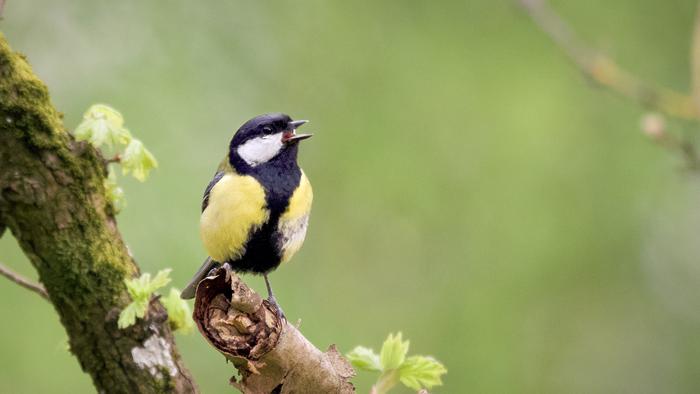The research was conducted over three years, involving the meticulous collection of more than twenty thousand hours of sound recordings from a wild population of great tits (Parus major) in Oxfordshire. This population has been the subject of a long-term study lasting 77 years, known as the Wytham Great Tit study. The primary objective was to explore how factors such as bird movement, age, and turnover within a population affect the richness of song diversity. The scientists examined which melodies gained popularity locally, which faded into obscurity, and how the song repertoires of these birds evolved over time.
Utilizing cutting-edge technology, the team employed a novel approach involving artificial intelligence to identify individual birds based solely on their distinctive songs. This method proved invaluable in measuring the variations in song repertoires among different individuals within the population. It facilitated a comprehensive analysis of the patterns governing song evolution, showcasing the fine-grained details of how birds learn and adapt their musical expressions.
The results of the study were illuminating, confirming that younger birds tended to have more homogenous song repertoires, while mixed-age neighborhoods exhibited a greater diversity in song types. This phenomenon suggests that the age composition of a bird population can significantly impact the cultural richness of their songs. Notably, the research indicated that the turnover of songs was largely driven by the arrival and departure of individual birds. When older birds died or left the area, many of their unique musical patterns vanished, only to be replaced by younger birds who embraced new and contemporary song types.
However, not all aspects of song evolution were dominated by change. The study revealed that older birds acted as vital “cultural repositories,” preserving traditional songs that were becoming less common. Similar to how grandparents may recall stories and traditions that younger generations have never encountered, these older birds provided a connection to musical heritage that could enrich the cultural tapestry of the bird population.
Another fascinating finding was the influence of social dynamics on song variation. The study revealed that increased mixing among bird populations—whether through local dispersal or the introduction of immigrants—led to the adoption of more prevalent songs. Ironically, this adoption of common tunes slowed the pace of song evolution, demonstrating that proximity and interaction between individuals can have a paradoxical effect on cultural expression.
Interestingly, the research showed that “homegrown” songs, those originating within local populations, tended to remain unique. Regions where birds were more inclined to stay close to their birthplace maintained diverse and distinctive song cultures. This mirrors the way isolated human communities often cultivate their dialects and musical styles, further illustrating the importance of social structure in cultural development.
When it comes to newcomers, the study found intriguing results. Immigrant birds arriving from distant areas typically adjusted to local song traditions instead of introducing entirely novel melodies. However, these newcomers expanded their repertoire by learning a greater array of songs, thereby enriching the local “musical scene” and adding layers of complexity to the ongoing song culture.
Professor Ben Sheldon, who has overseen the long-term bird study in Wytham Woods, reflected on the significance of continuous individual tracking. His insights reaffirm the notion that understanding the interplay between various processes in natural populations enhances our comprehension of ecological relationships. “It’s exhilarating to realize that the acoustic landscape we hear every spring in the woods can be explained through the cumulative effect of individual movements and survival over many years,” he noted.
The authors have made their dataset publicly available, welcoming other researchers to further delve into this rich repository of information. This collaboration underscores the importance of open access in scientific research, facilitating broader investigations into the fascinating ways in which cultures evolve within the natural world.
Subject of Research: Evolution of Bird Songs
Article Title: The demographic drivers of cultural evolution in bird song
News Publication Date: 7-Mar-2025
Web References: Current Biology
References: Current Biology
Image Credits: David López Idiáquez
Keywords: bird songs, evolution, cultural learning, demographic shifts, great tit, population dynamics, Oxford University, AI model, song diversity, conservation, cultural repositories, song evolution.
Tags: adaptations in bird songsAI in avian researchbirdsong evolutioncultural evolution of bird melodiesfactors affecting bird song variationgreat tit song diversityinfluence of movement on bird songslong-term bird studiesOxford University bird researchpopulation dynamics in birdssound recording in wildlife researchWytham Great Tit study





